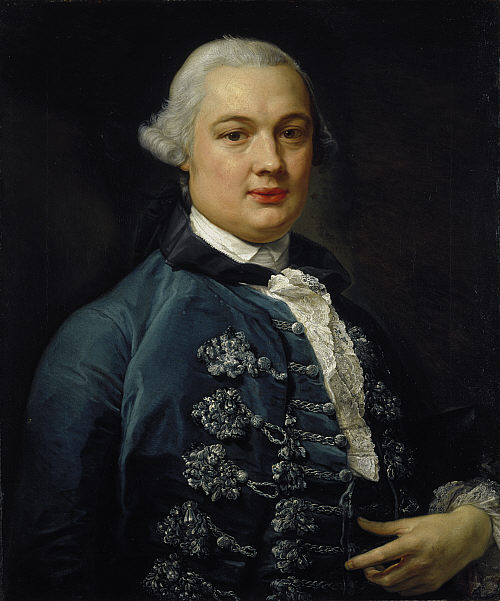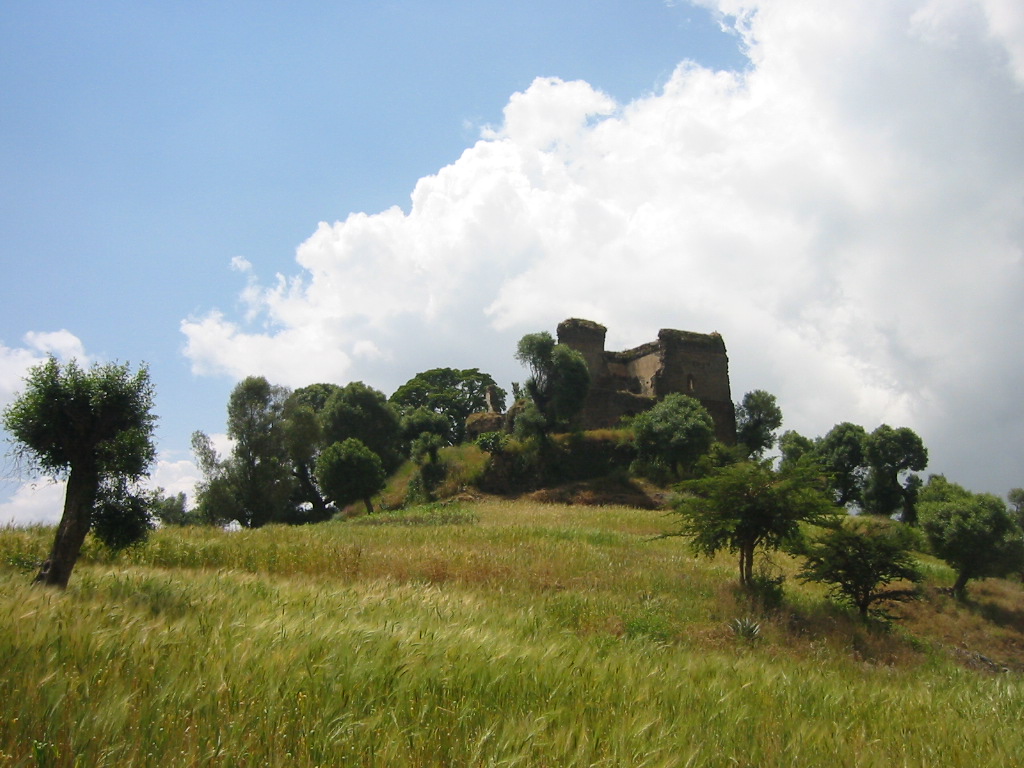|
Abd Al-Qadir II
Abd al-Qadir II was a ruler of the Kingdom of Sennar (1603/4 - 1606). According to James Bruce, he was the son of Unsa I, whom Bruce describes as "a weak and ill-inclined man". While he was ruler of Sennar, Emperor Susenyos of Ethiopia sent to Abd al-Qadir a ''nagarit'', or kettle-drum, richly decorated with gold, which was one of the traditional emblems of an Ethiopian negus or king; in return, Abd al-Qadir sent Susenyos a trained hunting falcon. Shortly after this diplomatic exchange, he was deposed by his brother Adlan. At some point following his deposition from the throne in 1606, Emperor Susenyos of Ethiopia appointed him governor of Chilga (also known as Ayikel Ayikel (Amharic: አይከል), also known as Chilga is a town in western Ethiopia. Located in the Semien Gondar Zone of the Amhara Region, it has a latitude and longitude of with an altitude of 2146 meters above sea level. The settlement is situat ...), an important market town near the Ethiopian border with Sennar. ... [...More Info...] [...Related Items...] OR: [Wikipedia] [Google] [Baidu] |
Kingdom Of Sennar
The Funj Sultanate, also known as Funjistan, Sultanate of Sennar (after its capital Sennar) or Blue Sultanate due to the traditional Sudanese convention of referring to black people as blue () was a monarchy in what is now Sudan, northwestern Eritrea and western Ethiopia. Founded in 1504 by the Funj people, it quickly converted to Islam, although this embrace was only nominal. Until a more orthodox Islam took hold in the 18th century, the state remained an "African empire with a Muslim façade". It reached its peak in the late 17th century, but declined and eventually fell apart in the 18th and 19th centuries. In 1821, the last sultan, greatly reduced in power, surrendered to the Ottoman Egyptian invasion without a fight. History Origins Christian Nubia, represented by the two medieval kingdoms of Makuria and Alodia, began to decline from the 12th century. By 1365 Makuria had virtually collapsed and was reduced to a petty kingdom restricted to Lower Nubia, until finally disapp ... [...More Info...] [...Related Items...] OR: [Wikipedia] [Google] [Baidu] |
James Bruce
James Bruce of Kinnaird (14 December 1730 – 27 April 1794) was a Scottish traveller and travel writer who confirmed the source of the Blue Nile. He spent more than a dozen years in North Africa and Ethiopia and in 1770 became the first European to trace the origins of the Blue Nile from Egypt and Sudan. Early life James Bruce was born at the family seat of Kinnaird, Stirlingshire, and educated at Harrow School and Edinburgh University, and began to study for the bar, but his marriage to the daughter of a wine importer and merchant resulted in him entering that business instead. His wife died in October 1754, within nine months of marriage, and Bruce thereafter travelled in Portugal and Spain as part of the wine trade. The examination of oriental manuscripts at the Escorial in Spain led him to the study of Arabic and Ge'ez and determined his future career. In 1758 his father's death placed him in possession of the estate of Kinnaird. To North Africa On the outbreak of war ... [...More Info...] [...Related Items...] OR: [Wikipedia] [Google] [Baidu] |
Susenyos Of Ethiopia
Susenyos I ( gez, ሱስንዮስ ; circa 1571-1575 – 17 September 1632), also known as Susenyos the Catholic, was Emperor of Ethiopia from 1606 to 1632, and a member of the Solomonic dynasty. His throne names were Seltan Sagad and Malak Sagad III. He was the son of '' Abeto'' Fasil, as well as the grandson of ''Abeto'' Yakob and the great-grandson of Dawit II. As a result, while some authorities list Susenyos as a member of the Solomonic dynasty, others consider him—rather than his son, Fasilides—as the founder of the Gondar line of the dynasty (which is, however, ultimately a subset of the Solomonic dynasty). The life of Susenyos is known through his chronicle, written by several official writers (''sehafe te’ezaz''). The Jesuits, who were closely associated with Susenyos’s reign, also left numerous documents on their mission in Ethiopia. Manuel de Almeida, a Portuguese Jesuit who lived in Ethiopia during Susenyos' reign, described the emperor as tall with the fea ... [...More Info...] [...Related Items...] OR: [Wikipedia] [Google] [Baidu] |
Negus
Negus (Negeuce, Negoose) ( gez, ንጉሥ, ' ; cf. ti, ነጋሲ ' ) is a title in the Ethiopian Semitic languages. It denotes a monarch, Merriam Webster dictionary such as the Negus Bahri (king of the sea) of the kingdom in pre-1890 , and the Negus in pre-1974 . The negus is referred to as ... [...More Info...] [...Related Items...] OR: [Wikipedia] [Google] [Baidu] |
Falcon
Falcons () are birds of prey in the genus ''Falco'', which includes about 40 species. Falcons are widely distributed on all continents of the world except Antarctica, though closely related raptors did occur there in the Eocene. Adult falcons have thin, tapered wings, which enable them to fly at high speed and change direction rapidly. Fledgling falcons, in their first year of flying, have longer flight feathers, which make their configuration more like that of a general-purpose bird such as a broad wing. This makes flying easier while learning the exceptional skills required to be effective hunters as adults. The falcons are the largest genus in the Falconinae subfamily of Falconidae, which itself also includes another subfamily comprising caracaras and a few other species. All these birds kill with their beaks, using a tomial "tooth" on the side of their beaks—unlike the hawks, eagles, and other birds of prey in the Accipitridae, which use their feet. The largest fal ... [...More Info...] [...Related Items...] OR: [Wikipedia] [Google] [Baidu] |
Adlan I
Adlan I (reigned 1606 - 1611/12) was a ruler of the Kingdom of Sennar. He was the son of Ayat, although James Bruce writes he was the son of Unsa I and the brother of Abd al-Qadir, whom he deposed and exiled from Sennar. Adlan was, in turn, deposed by his nephew Badi. During his reign, Sennar was at peace with its neighbor, Ethiopia Ethiopia, , om, Itiyoophiyaa, so, Itoobiya, ti, ኢትዮጵያ, Ítiyop'iya, aa, Itiyoppiya officially the Federal Democratic Republic of Ethiopia, is a landlocked country in the Horn of Africa. It shares borders with Eritrea to the .... The Ethiopian ''Royal Chronicles'' mention that Adlan sent a team of fine horses to Emperor Susenyos as gifts. H. Weld Blundell, ''The Royal chronicle of Abyssinia, 1769-1840'' (Cambridge: University Press, 1922), p. 530. References Rulers of Sennar 17th-century African people {{Africa-royal-stub ... [...More Info...] [...Related Items...] OR: [Wikipedia] [Google] [Baidu] |
Ayikel
Ayikel (Amharic: አይከል), also known as Chilga is a town in western Ethiopia. Located in the Semien Gondar Zone of the Amhara Region, it has a latitude and longitude of with an altitude of 2146 meters above sea level. The settlement is situated on the east–west road connecting Gondar with Metemma, and is the administrative center of Chilga woreda. Ayikel is mentioned, by its older name of "Chilga", by James Bruce, as a marketplace on the border between the Kingdom of Sennar and Ethiopia which was under their shared administration, and over which Emperor Susenyos in 1606 appointed the deposed king of Senaar, Abd al-Qadir as governor. Demographics Based on figures from the Central Statistical Agency The Central Statistical Agency (CSA; Amharic: ማዕከላዊ ስታቲስቲክስ ኤጀንሲ) is an agency of the government of Ethiopia designated to provide all surveys and censuses for that country used to monitor economic and social growth ... in 2005, this town has a ... [...More Info...] [...Related Items...] OR: [Wikipedia] [Google] [Baidu] |
17th-century African People
The 17th century lasted from January 1, 1601 ( MDCI), to December 31, 1700 ( MDCC). It falls into the early modern period of Europe and in that continent (whose impact on the world was increasing) was characterized by the Baroque cultural movement, the latter part of the Spanish Golden Age, the Dutch Golden Age, the French ''Grand Siècle'' dominated by Louis XIV, the Scientific Revolution, the world's first public company and megacorporation known as the Dutch East India Company, and according to some historians, the General Crisis. From the mid-17th century, European politics were increasingly dominated by the Kingdom of France of Louis XIV, where royal power was solidified domestically in the civil war of the Fronde. The semi-feudal territorial French nobility was weakened and subjugated to the power of an absolute monarchy through the reinvention of the Palace of Versailles from a hunting lodge to a gilded prison, in which a greatly expanded royal court could be more easily k ... [...More Info...] [...Related Items...] OR: [Wikipedia] [Google] [Baidu] |
Rulers Of Sennar
A ruler, sometimes called a rule, line gauge, or scale, is a device used in geometry and technical drawing, as well as the engineering and construction industries, to measure distances or draw straight lines. Variants Rulers have long been made from different materials and in multiple sizes. Some are wooden. Plastics have also been used since they were invented; they can be molded with length markings instead of being scribed. Metal is used for more durable rulers for use in the workshop; sometimes a metal edge is embedded into a wooden desk ruler to preserve the edge when used for straight-line cutting. in length is useful for a ruler to be kept on a desk to help in drawing. Shorter rulers are convenient for keeping in a pocket. Longer rulers, e.g., , are necessary in some cases. Rigid wooden or plastic yardsticks, 1 yard long, and meter sticks, 1 meter long, are also used. Classically, long measuring rods were used for larger projects, now superseded by ta ... [...More Info...] [...Related Items...] OR: [Wikipedia] [Google] [Baidu] |






